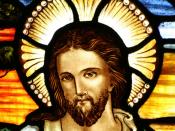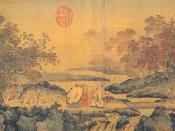If you were to translate the word Tao into English it would be defined as path, or the way. However it is basically indefinable. It is not tangible it, has to be experienced. Taoism refers to a power which envelops, surrounds, and flows through all things, living and non-living. The "Tao" regulates natural processes and nourishes balance in the universe. It embodies the harmony of opposites. For example; there would be no love without hate, no light without dark, no male without female.
The founder of Taoism is said by many to be Lao-Tse, an ex-follower of Confucius. He was searching for a way that would avoid the constant warfare that disrupted society during his life. His result was his book the Tao-te-Ching. Others believe that Lao-Tse is a mythical character.
Taoism started as a combination of psychology and philosophy but evolved into a religious faith in 440 AD when it was adopted as a state religion.
At that time Lao-Tse became popularly recognized as a god. Taoism, beside Buddhism and Confucianism, became one of the three great religions of China. So it gave the Chinese a little more choice in what they wanted to believe in. The fall of the Ching Dynasty in 1911 brought the end of state support for Taoism. Much of the Taoist tradition was shattered during the next period of warlordism. After the communist victory in 1949, religious freedom was very restricted. The new government put monks to manual labor, confiscated temples, and plundered treasures. By the 1960s the millions of monks were reduced to only 50,000. During the Cultural Revolution in China, much of the remaining Taoist heritage was destroyed. Some religious tolerance has been brought back under Deng Xiao-ping from 1982 to the present time.
Now Taoism has about 20 million followers, and...


